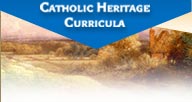AMDG+ Dear Parent; First, you have done a wonderful job of teaching your son to read, as evidenced by the books he is reading. Isn't it rewarding to see him reading, and enjoying reading? You ask some insightful, thoughtful questions. Perhaps the best way to begin answering them is to give you a quick visual tour of Little Stories for Little Folks and the related handwriting and spelling workbooks, which reinforce the phonics learned in LSLF. My explanations will likely make more sense if you can take the tour first. For this tour, please would you check out each of these links? The first introduces LSLF. http://www.chcweb.com/catalog/LittleStoriesforLittleFolksCatholicPhonicsReaders/product_info.html The following link connects you with the first grade Interactive Guide, where you can see a bit of the LSLF program, along with the first grade speller and handwriting/phonics reinforcement workbook. https://chcweb.cld.bz/Interactive-Catalog-and-Grade-Guides/Interactive-Guide-Grade-1/8/ To continue: Little Stories for Little Folks: Catholic Phonics Readers uses a completely different approach to reading from TYCR100, and carries the student about a year beyond the reading level of TYCR100. LSLF doesn't introduce phonogram study as separate from reading words, precisely because the end result is often children who balk and then begin to dread reading. Instead, phonograms are studied within the context of word families, which children understand, rather than bits of sound to be memorized, which children often find pointless and painful. Both approaches give children the tools to analyze words, but the former method is generally more easily grasped than the latter. I don't know if you are familiar with the seventy-two Orton phonograms that represent the common spelling patterns of most sounds used in the English language, but when added to the twenty-nine Spalding spelling rules, around 90% of the English language can be analyzed phonetically. What this means is that, after studying seventy-two phonograms and twenty-nine rules, about 10% of the words in the English dictionary aren't going to fit any of the rules. That's one word out of ten! [This is what happens when a language borrows heavily from Latin, German, Spanish, French, among others, and then calls itself English.] The approach used by LSLF bears some similarity to Rosetta Stone's approach to teaching foreign language. That is, as infants we didn't learn speech by conjugating endless columns of words. Rather, we learned verbs within the context of speech. LSLF teaches phonics within the context of word families, and does not use phonetic markings, as phonetic markings aren't encountered in the books children read. For example, one of the most commonly encountered constructions for long vowels is the long vowel with 'signal e' pattern, e.g., Mike, bike, hike; bake, cake, rake. With the Name Game used in LSLF, children learn to recognize this pattern and many others, within the context of words. Using this method, by the time the student has mastered the LSLF program in first grade his reading level will be at least at the end of second grade. I should also mention that short vowels are taught first along with consonants via alphabet flash cards. When basic vowel and consonant sounds have been mastered, then the child is taught to blend these sounds into simple words. When the child has caught on to the idea of blending sounds to make simple words, he is ready to read the first story, which consists primarily of short vowel a words. [Instructions are found in the LSLF Parents' Guide.] Letter tiles are used as one of many means to practice spelling words. The more exposure a child has to the spelling words, through hearing, seeing, and touching, the greater degree of success. I've heard good things about All About Spelling, but have not seen the program. Since spelling skills usually lag reading skills by at least a year; most second graders have some difficulty with spelling, as they haven't been reading that long. [It sounds as if you are doing a great job and are right on top of his education, so I wouldn't worry too much at this juncture.] However, if you wish to try CHC's spelling program, you may want to begin with My Catholic Speller A, which is phonics based, and generally used in second grade. If your son begins to struggle after a few lessons, you will have an idea where to begin work; if the book is below his level, he can move through it fairly quickly, which should boost his confidence. [Please be sure to do the practice suggested in the introduction, as well as the daily work, for maximum success.] Again, congratulations on your teaching skills. Isn't homeschooling a gift? [Not unlike assembling that bicycle at Christmas: a gift that comes with a bit of work, but a gift nonetheless.] May Our Lord bless you as you homeschool to your son's benefit and to the glory of God. Nancy Nicholson
|

